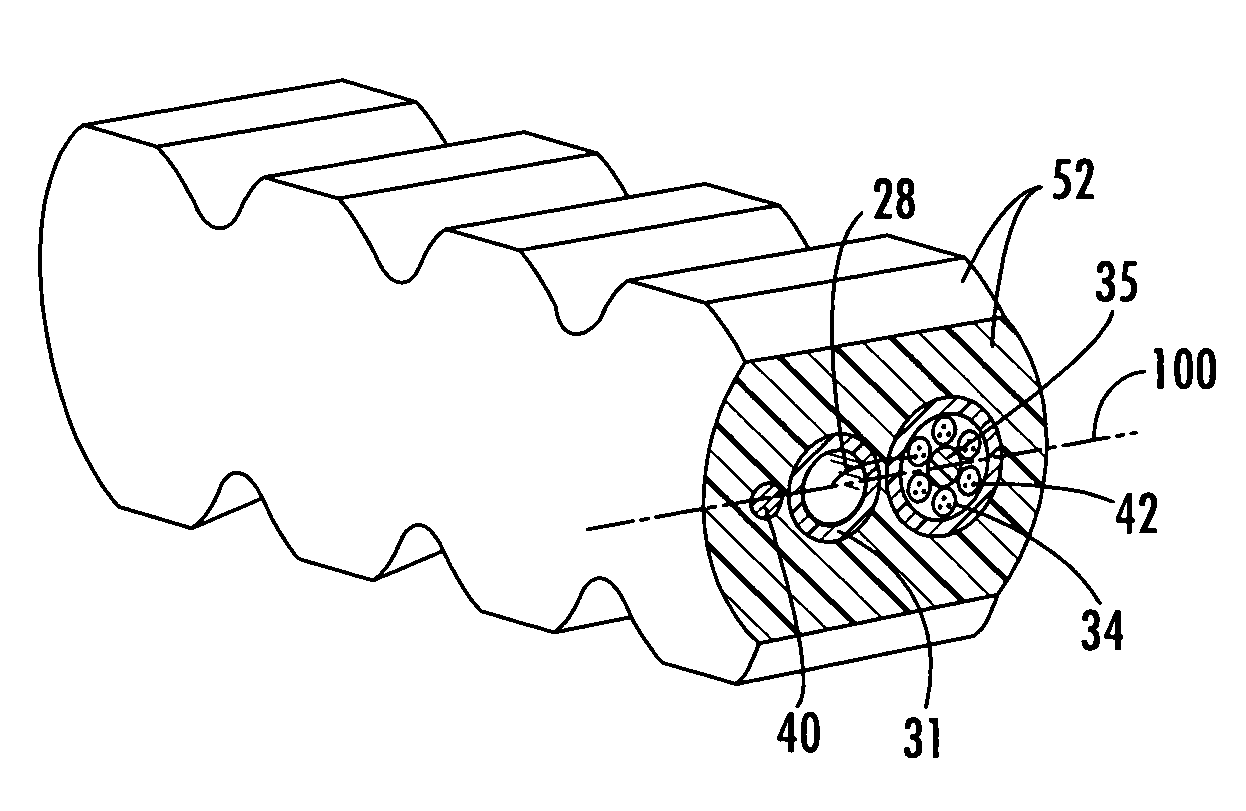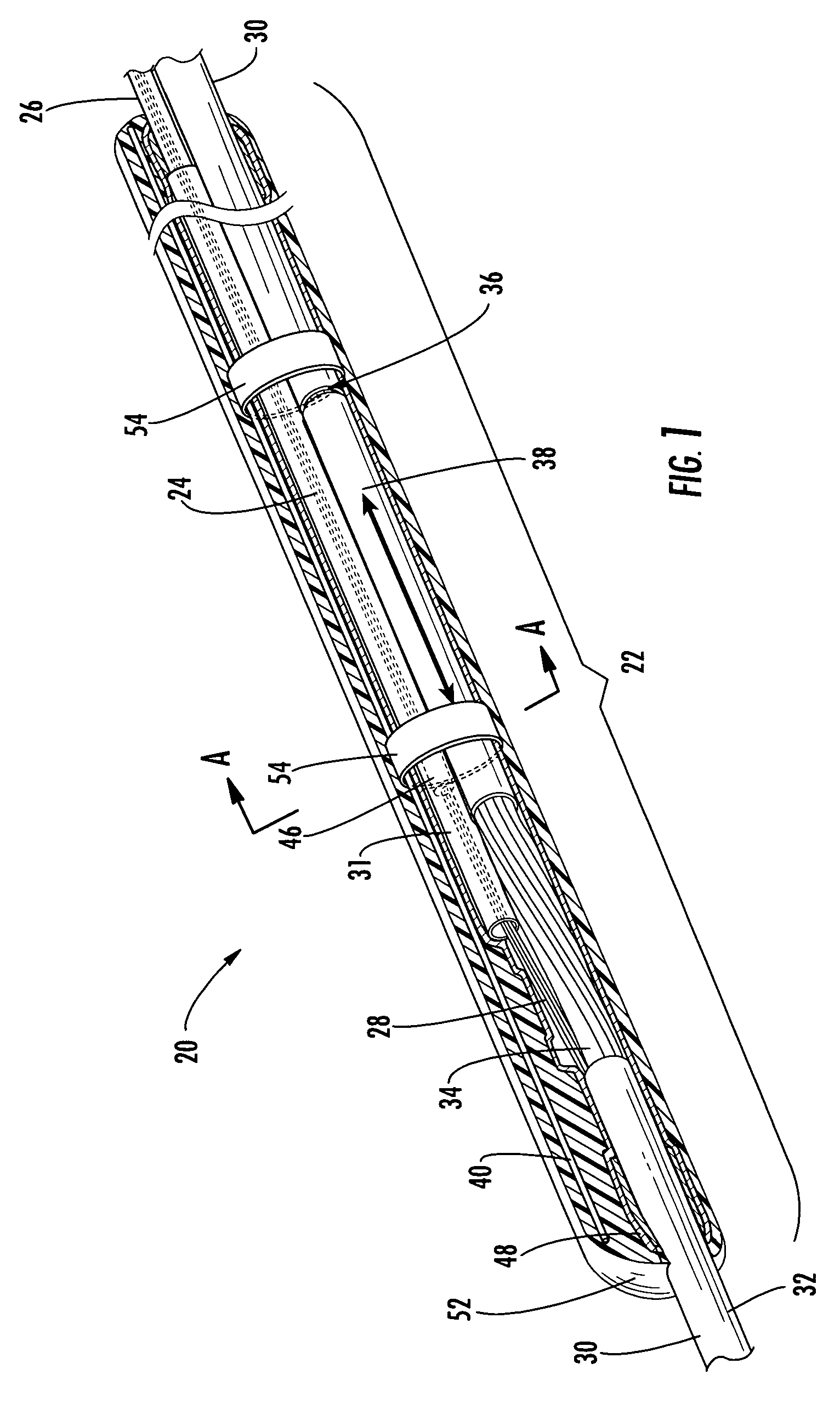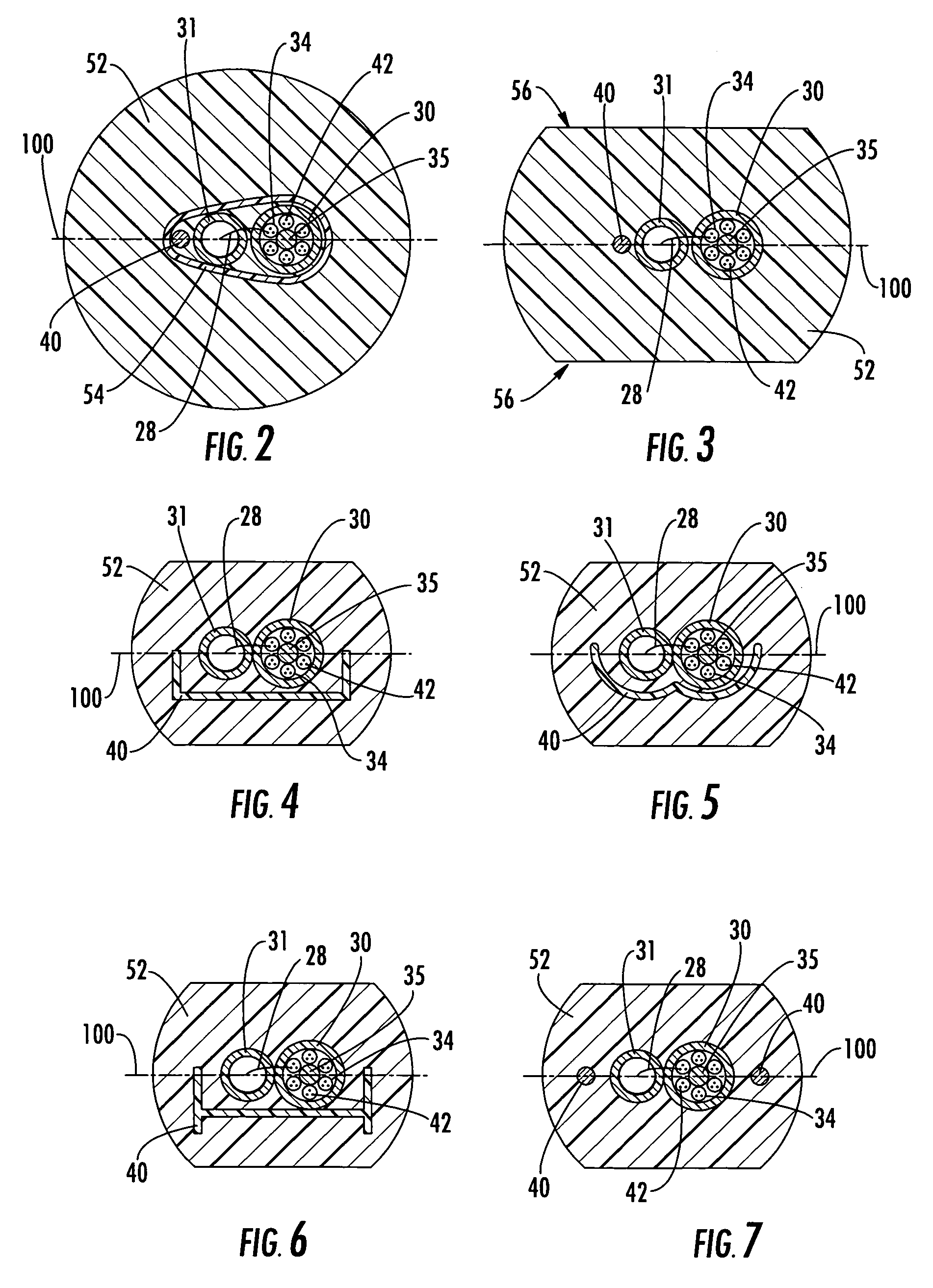[0010]To achieve the foregoing and other objects, and in accordance with the purposes of the invention as embodied and broadly described herein, the present invention provides various embodiments of a factory-prepared fiber optic distribution cable assembly having at least one predetermined mid-span access location with a preferential bend to reduce the path length differences between the optical fibers terminated from the distribution cable and the optical fibers remaining in the helically wound buffer tubes of the distribution cable, thereby preventing breakage of the terminated optical fibers due to axial tension stresses induced by bending. At each mid-span access location, a plurality of optical fibers are accessed, severed, transitioned and routed separately from the remaining optical fibers of the distribution cable. The terminated optical fibers are spliced or otherwise optically connected to respective optical fibers of a tether cable. The downstream end of the tether cable may terminate in splice-ready optical fibers, connectorized optical fibers, one or more optical connection terminals, a pedestal or any other terminal for connecting optical fibers. As used herein, the terms “tether” and “tether cable” should be understood to include any fiber optic cable, drop cable, branch cable, sub-distribution cable or like conduit for routing and protecting at least one optical fiber.
[0011]Each mid-span access location of the distribution cable assembly is provided with a preferential bend such that breakage of terminated optical fibers resulting from axial tension stresses induced by bending is prevented. In particular, the terminated optical fibers are protected during normal handling, cable reeling, un-reeling and installation. The entire distribution cable assembly, including the mid-span access locations and attached tether cables, is suitable for installation through small-diameter conduits or over aerial installation sheave wheels and pulleys as a result of the low-profile design of the mid-span access locations. In several embodiments, a strength member is added to each mid-span access location prior to overmolding in order to provide a preferential bend, thereby preventing damage to the encapsulated optical fibers caused by path length differences that result from bending the mid-span access location. In other embodiments, the mid-span access location is overmolded with a geometrical configuration such that the mid-span access location bends along a preferred axis. In still further embodiments, both a strength member is added to the mid-span access location prior to overmolding, and the mid-span access location is overmolded with a geometrical configuration that promotes bending along a preferred axis.
[0012]In an exemplary embodiment, the present invention provides a factory-prepared fiber optic distribution cable assembly comprising at least one predetermined mid-span access location positioned along the length of the distribution cable, at least one additional strength member axially aligned with the distribution cable, at least one tether attached to the distribution cable at the mid-span access location, and a flexible overmolded body encapsulating the mid-span access location. The alignment of the strength member and the distribution cable creates a preferential bend along a common axis, thereby reducing any path length differences induced by bending and preventing breakage of the optical fibers terminated from the distribution cable.
[0013]In another exemplary embodiment, the present invention provides a factory-prepared fiber optic distribution cable assembly comprising at least one predetermined mid-span access location positioned along the length of the distribution cable, at least one strength member structure having a predetermined shape, at least one tether attached to the distribution cable at the mid-span access location, and a flexible overmolded body encapsulating the mid-span access location and the strength member structure. The addition of the strength member structure creates a preferential bend along a preferred axis, thereby reducing any path length differences induced by bending and preventing breakage of the optical fibers terminated from the distribution cable.
[0014]In yet another exemplary embodiment, the present invention provides a factory-prepared fiber optic distribution cable assembly comprising at least one predetermined mid-span access location positioned along the length of the distribution cable, one or more optical fibers accessed and terminated from the distribution cable at the mid-span access location, a tether cable attached to the distribution cable at the mid-span access location, and a flexible overmolded body encapsulating the mid-span access location and having a geometric configuration such that a preferential bend is created along a common axis, thereby reducing any path length differences induced by bending and preventing breakage of the optical fibers terminated from the distribution cable.
[0015]In yet another exemplary embodiment, the present invention provides a factory-prepared fiber optic distribution cable assembly comprising at least one predetermined mid-span access location positioned along the length of the distribution cable, one or more optical fibers accessed and terminated from the at least one mid-span access location, an additional strength member axially aligned with the distribution cable, a tether cable attached to the distribution cable at the mid-span access location, and a flexible overmolded body encapsulating the mid-span access location and having a geometric configuration such that a preferential bend is created along a common axis, thereby reducing any path length differences induced by bending and preventing breakage of the optical fibers terminated from the distribution cable.
 Login to View More
Login to View More  Login to View More
Login to View More 


